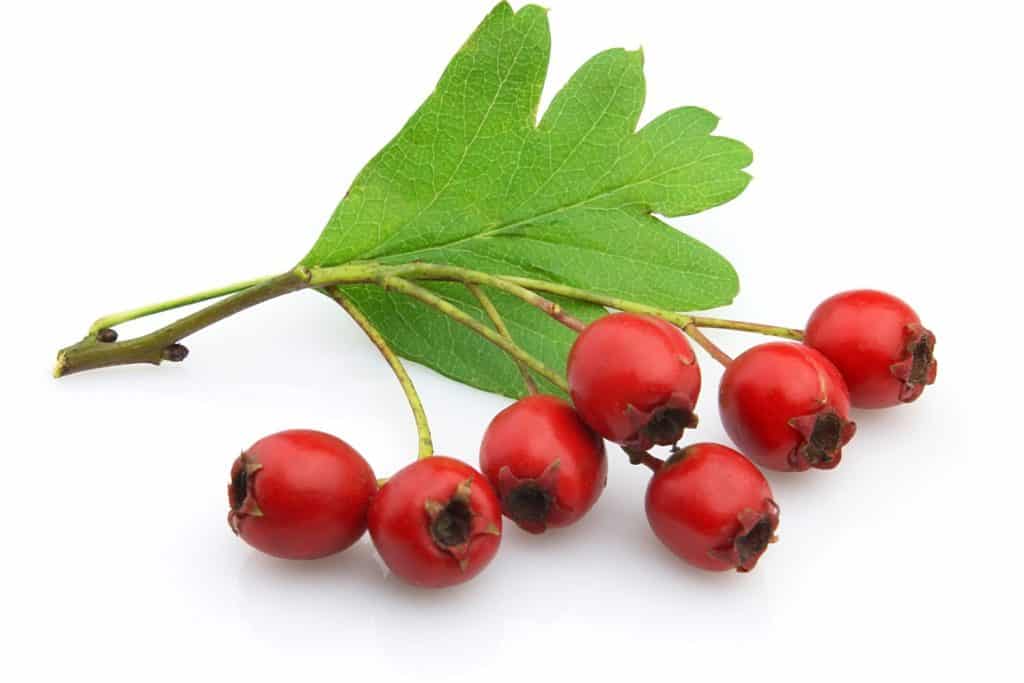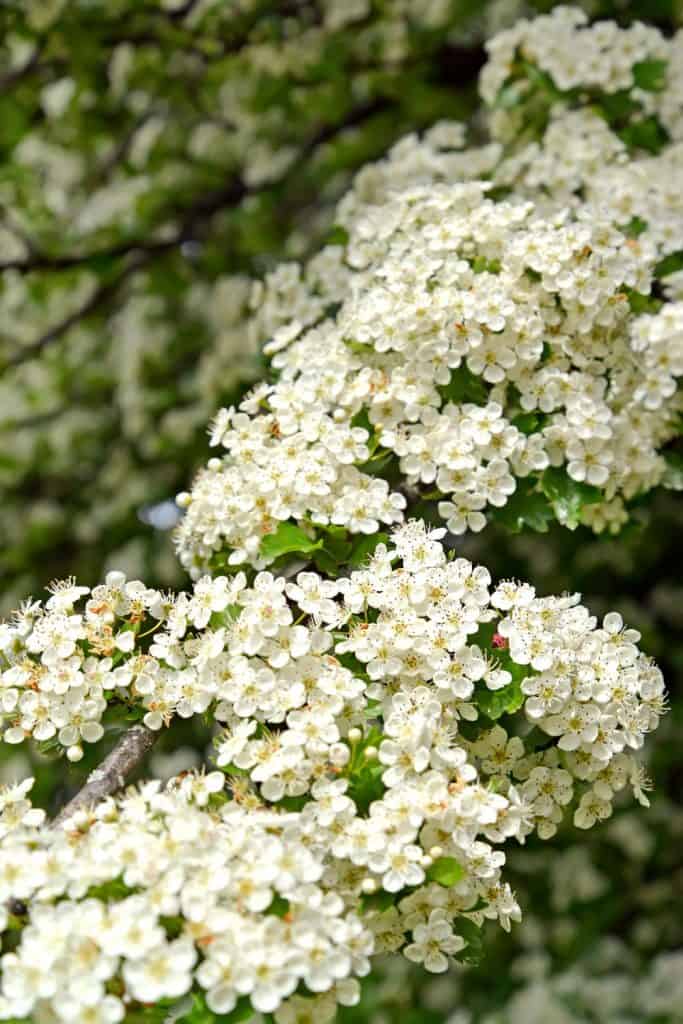Hawthorns make for excellent landscaping additions. They have bright flowers, attractive fall colors, provide shade, even can bear fruit, and attract songbirds. So you are wondering, does hawthorn grow in shade? Well, you have come to the right place. In this post, we have thoroughly done our research to provide an in-depth answer to your question.
Hawthorns will grow in partial shade. However, it is not recommended that you grow them in full shade. Usually, nurseries and planting experts advise planting hawthorns in full sun. To grow a hawthorn in partial shade, take steps to make the area as favorable as possible for hawthorn growth.
Keep reading the rest of this post for details on the hawthorn's preferred habitat. We include a guide on how to best grow hawthorn in partial shade including how shade affects the plant's growth. In addition, we answer several questions related to this post's topic.

Is Hawthorn a shade tolerant?
Hawthorn is not a classic shade-tolerant species. Some beautiful garden plants will thrive and really light up a shady area. Plants like these are known as shade tolerant species. If you are looking for shade tolerant species, the best place to ask is your local gardening center. Asking locally is key because local climate and shade combine to situate certain species as shade tolerant or not to your area.

Hawthorn, on the other hand, will grow in partial shade, but it is not its preferred level of sunniness. Instead, hawthorns like full bright sun. But as mentioned above, hawthorn can still grow and even thrive in partial shade.
If you only have a shady spot but had your heart set on hawthorn do not worry. There are many beautiful shade tolerant trees. For instance, this great article includes 11 such trees, "11 Gorgeous Trees That Like Wet Soil And Shade."
How to Grow Hawthorn in Partial Shade?
First of all, it is important to know that hawthorn will grow shorter in shade than in sun. This means that instead of the potential for a 30-foot tree, the maximum height you should expect is about 15 feet. Further, the branches of hawthorn in partial shade will be shorter and denser. These factors combine to form a stockier-looking tree.

Before even considering planting a hawthorn be sure that your hardiness zone coincides with what a hawthorn prefers. There are many species of hawthorn but they generally prefer hardiness zones 4 - 9. Areas that are colder and/or hotter and drier than this are not recommended. Be sure to confirm the specific zones of your species of hawthorn before moving forward.
To encourage the growth of your shady hawthorn take a look at the following general recommendation. These subsections cover the ideal soil, moisture level, recommended fertilizer, pruning care, and pest precautions for growing hawthorn.
Soil
Hawthorn prefers well-drained soil with lots of organic matter. This combination allows for moisture to be suspended in the soil, without the area getting soggy and waterlogged. Further, hawthorn is relatively tolerant of both alkaline and acidic soil.
Click here for a well-reviewed compost from Amazon.
Soil that is dark and rich looking is usually also high in organic matter. You can amend organic poor soil by adding compost and/or topsoil. So when you plant a hawthorn in partial shade (or in sun for that matter) be sure that the soil is dark and healthy-looking to increase your chances of success.
Moisture
The first year you plant your hawthorn is usually the only time you will need to consciously water your tree. This is because as the tree roots are establishing in the new soil, they are not very drought tolerant. After you find that the tree is established and looking healthy in the spring, you probably will not need to water again. This is because hawthorns are a relatively drought-tolerant species.
That first year, only water during unusually long dry spells, or if you see the hawthorn wilting at all. If you overwater a plant, it will discourage root growth and reduce future hardiness and success rate. Take a look at this article (which includes hawthorn) for other great outdoor plants that require little water, "37 Outdoor Plants That Need Little Water."
Fertilizer
Click here for a fertilizer appropriate for hawthorn from Amazon.
Generally, hawthorns are not greedy for fertilizer like other plants and vegetables. Instead, it is recommended that you apply a balanced fertilizer (5-5-5) every other year. If you provide a hawthorn with good organic soil as recommended above, the need for fertilizer is relatively limited.
Pruning Care
Unlike fruiting trees, hawthorn does not require heavy pruning. However, it is still wise to prune your hawthorn for look and shape. Take off branches that are crowding out other garden features or are perhaps in the way of easy movement. Also, be sure to remove dead branches to make room for those living sprouts.
Pest Precations
Hawthorn is relatively susceptible to pest infestations. Generally, these take the form of a large range of soft bodies leaf-eating insects, and mites. If these types of infestations are common in your area or yard, it is probably worth spraying your tree regularly as a preventative measure.
Click here for neem oil from Amazon.
The best option for this type of preventative pest management is a light horticultural oil, such as neem oil. Simply dilute these sprays to the recommended levels and give the tree a good dousing. If the tree is young, perhaps wait until it gets the shade as sun and spray can combine to burn a plant.
If you notice a full-blown infestation you might need to take stronger steps. Usually, a simple internet search and a magnifying glass can lead you to a solid identification of your pest type. Then research a good pesticide that works for the pest, and apply as directed. Alternatively, a local gardening store or expert should also be able to help you out.
Do Hawthorns have Thorns?
Yes, hawthorns are thorny. While not all hawthorn species are the same, hawthorns usually have many dagger-like thorns. This means it is important to take precautions while pricing hawthorn, and also sets these plans as inappropriate for high traffic and high touch areas. Further, be cautious with little kids around hawthorn trees.
How quickly does a Hawthorn grow?
Hawthorn grows relatively slowly. In fact, it generally grows about 12-inches per year. Expect this growth rate, or even slower, for a hawthorn planted in partial shade. On the other hand, a hawthorn in full sun can grow as fast as 24-inches per year.
How far apart should Hawthorns be planted?
While different hawthorn species have different growing patterns, you can plant hawthorn as close as 2-feet apart. This close planting schedule will produce a hedge of hawthorn growth. On the other hand, you can plant a hawthorn in the middle of a 10-foot diameter area and the mature tree will fully fill the space. This means that plant hawthorn according to the final desired design and look of your landscaping.
Indian hawthorn: sun or shade?
Like most hawthorn, Indian hawthorn prefers full sun but will tolerate partial shade. Generally, this means that for the best-looking Indian hawthorn plant, be sure that it gets lots of sun almost every day. In this environment, and with the proper care, you should expect a beautiful hawthorn tree for your yard.
In Closing

In this post, we answered the question of whether or not hawthorns will grow in the shade. Following the answer, we covered how to best grow hawthorns and how to care for these striking trees. To conclude, we provided the answers to several related questions. Good luck!



